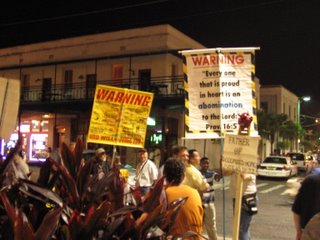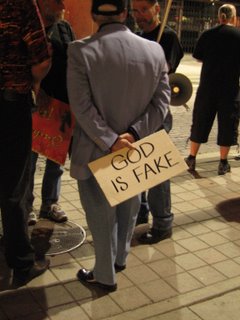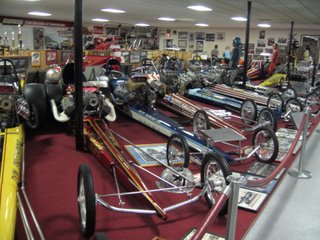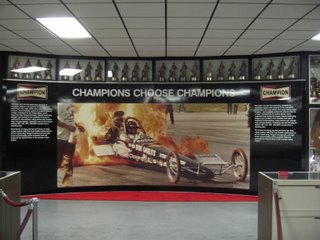On the surface, there's nothing unusual about the evangelicals who come to protest every Friday night in Ybor City. Ybor City is the old cigar making district of Tampa, named after Vicente Martinez-Ybor, who built his cigar factory there in 1886, and it has made the transition from Latin American and Italian social clubs to out-and-out discotheques and bars open to all. Obviously all of that drinking and dancing leads to sinning—if you don't consider the drinking and dancing sins themselves.
So the signs—Warning! God Will Judge You—aren't that surprising, especially for those who have lived in other dens of sin. (Ahem: Berkeley; Oberlin, Ohio; Seattle; San Francisco.) Being shouted at and molested by the righteous is depressingly normal.
I am in Ybor with Michael Krasilovsky, who was a roommate of mine in college and is now a grad student at the University of Florida, and his coworkers. Michael works at a satellite lab about 20 miles south of here, in Ruskin, and has just finished counting thousands of fish for his most recent study. He's taken everyone out for drinks, and now a gaggle of us are walking down 7th Avenue, obnoxious in general but not obnoxious for Ybor.
7th Avenue is a long line of spoilers and spinning rims, sport bikes, and, on the sidewalk, women in short, backless dresses holding the arms of men in pastel polo shirts. There's also a very pronounced racial component: If you go too far east, the white people disappear. The same is true of going too far west, but there everyone disappears and the projects start.
The middle section, which somewhere is probably known as the Heart of Ybor City, is a jumble of bars (the Green Iguana, the James Joyce Irish Pub), clubs (Prana, Pleasuredome), and overpriced restaurants. In the day, Ybor is home to a number of antique shops, but at night the dark windows reflect the nightlife and you never notice what's inside. Here you go cruising, or bar hopping, or people watching—you can sit and watch people walk, or watch them get tattooed at Valhalla, which has big windows that let gawkers look on as the patrons curse and writhe.
Back at the Ybor Brewing Company, I tried to ask where the artsy kids hang out. “You know,” I said, “black frame glasses, tattoos that don't make any sense—arrows and can openers and vegetables. Funny haircuts.”
“I don't think we have any of them here,” Ryan had said. Ryan is 20 and has lived around Tampa Bay his whole life. He's a nice guy, big, firm handshake. He loves Florida and wishes, goodheartedly, that all the Yankees would go home. “Yeah, I think here that's like a phase in high school that people get over. You don't really see them.”
If they exist in Tampa—and I suspect that, in small numbers, they must—they certainly aren't in Ybor City tonight. The people mostly look like suburbanites out for a big night out on the town. That's not surprising, considering that the centerpiece of Ybor City is Centro Ybor, which is more like an outdoor mall than a cultural hub. Which is the point: “For years,” the Ybor Times website says, “Tampa's historic Ybor City has been a magnet for night clubbers, wandering teens and rowdy college kids. Centro Ybor aims to add suburbanites and families to the mix by offering shopping, entertainment and food all day long, not just late at night.”
On the sidewalk outside Centro Ybor, the evangelicals gather with their signs. As out group passes them, one of them actually says, to no one in particular, “Repent, the Rapture is coming!” For the most part, people ignore them, walking with shoulders back and eyes straight ahead.
Not everyone, though. In Ybor tonight, the atheists are counter protesting. God is Fake. Jesus Isn't Coming!
Michael's coworkers are among the great majority that ignore the protesters. I try and make conversation, point out how absurd everything is, but Sherrie, who I'm talking to, isn't amused. Even Michael says, “Those people make me uncomfortable—all of them.”
Everyone goes into Coyote Ugly, because that's the one place where Ryan can get in. The cover is $5, and since I think Coyote Ugly is silly and Michael doesn't like paying money to go spend money on overpriced drinks, we bail. I drag him over to talk the atheists, but he stands far away, as if they're going to infect him with something. “You have to engage your discomfort,” I tell him later.
The first man I talk to is holding the sign that says Jesus Isn't Coming! His name is Carlos, and he used to be Catholic priest. I am surprised. He's happy to relate his life story to me, how he found Jesus and found atheism. When he has finished, he hands me all sorts of atheist materials—a CD, flyers, a card.
Michael and I walk around a little more, but we can't really avoid passing Centro Ybor, and this time, Michael comes with me. The atheists will be there, Carlos has told me, as long as the fundamentalists are.
We talk this time to a man named Jerry, who I come to understand is the leader of this group of Tampa Bay atheists. He's a former Pentecostal minister in St. Pete, grew up in the church, was going to make it his calling. But it's fake, he says, a lie. People need comfort, but they don't need to be told that who they are is wrong.
Both Carlos and Jerry talk with a missionary fervor, something Michael picks up on as well. Their certainty is uncomfortable, Michael says. They think they know they're right.
I thank Jerry for his time, and he invites me to visit them tomorrow, which is Gay Pride day in St. Petersburg. We go, he says, wherever they go, and points with his thumb at the evangelicals. I tell him that we'll see what we've got on the table tomorrow and see.
When I step back to take pictures, the atheists model and smile. The evangelicals, perhaps because I've been talking to the atheists, turn away, shy, uncomfortable, as if ashamed.







